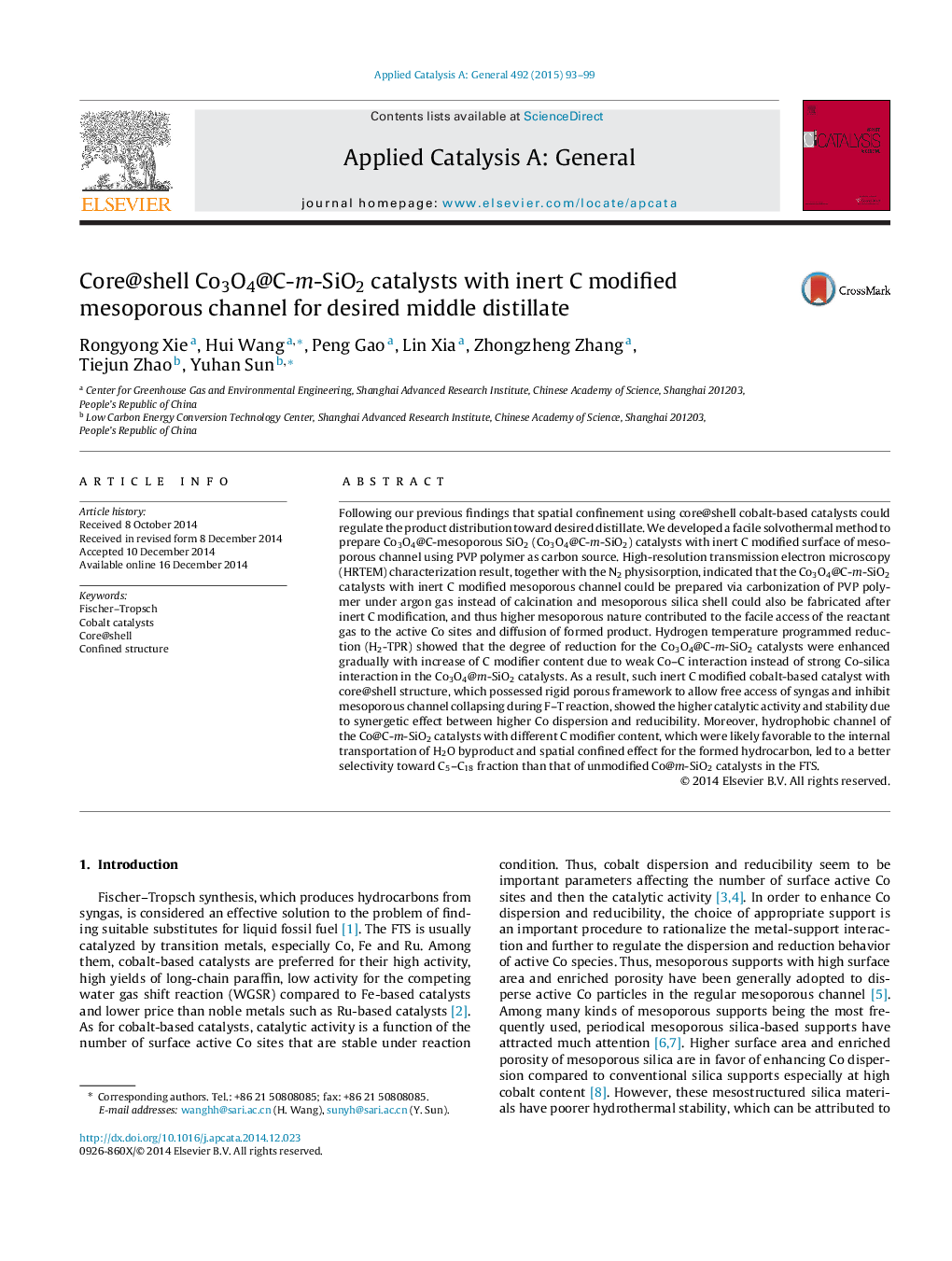| کد مقاله | کد نشریه | سال انتشار | مقاله انگلیسی | نسخه تمام متن |
|---|---|---|---|---|
| 39218 | 45813 | 2015 | 7 صفحه PDF | دانلود رایگان |

• We reported a facile solvothermal route to prepare core@shell catalysts.
• A rigid framework with inert C modified mesoporous channel were obtained.
• Higher reduction was achieved by weak interaction between cobalt oxide and inert C modifier.
• The core@shell catalyst showed the higher selectivity toward middle distillate.
Following our previous findings that spatial confinement using core@shell cobalt-based catalysts could regulate the product distribution toward desired distillate. We developed a facile solvothermal method to prepare Co3O4@C-mesoporous SiO2 (Co3O4@C-m-SiO2) catalysts with inert C modified surface of mesoporous channel using PVP polymer as carbon source. High-resolution transmission electron microscopy (HRTEM) characterization result, together with the N2 physisorption, indicated that the Co3O4@C-m-SiO2 catalysts with inert C modified mesoporous channel could be prepared via carbonization of PVP polymer under argon gas instead of calcination and mesoporous silica shell could also be fabricated after inert C modification, and thus higher mesoporous nature contributed to the facile access of the reactant gas to the active Co sites and diffusion of formed product. Hydrogen temperature programmed reduction (H2-TPR) showed that the degree of reduction for the Co3O4@C-m-SiO2 catalysts were enhanced gradually with increase of C modifier content due to weak Co–C interaction instead of strong Co-silica interaction in the Co3O4@m-SiO2 catalysts. As a result, such inert C modified cobalt-based catalyst with core@shell structure, which possessed rigid porous framework to allow free access of syngas and inhibit mesoporous channel collapsing during F–T reaction, showed the higher catalytic activity and stability due to synergetic effect between higher Co dispersion and reducibility. Moreover, hydrophobic channel of the Co@C-m-SiO2 catalysts with different C modifier content, which were likely favorable to the internal transportation of H2O byproduct and spatial confined effect for the formed hydrocarbon, led to a better selectivity toward C5–C18 fraction than that of unmodified Co@m-SiO2 catalysts in the FTS.
Figure optionsDownload high-quality image (167 K)Download as PowerPoint slide
Journal: Applied Catalysis A: General - Volume 492, 25 February 2015, Pages 93–99